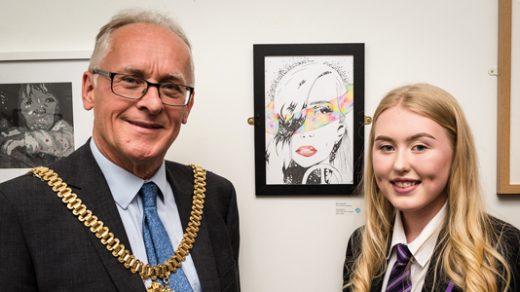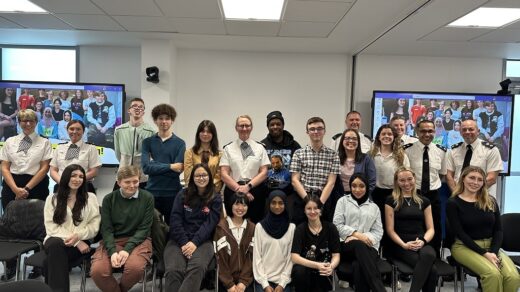Internet Matters pushes for mandatory online safety standards for women and girls

Ofcom recently updated its “A Safer Life Online for Women and Girls” guidance [25 November 2025]. In line with this, Rachel Huggins has urged the government to upgrade the guidance and make it mandatory. Rachel is the co-CEO at Internet Matters, Britain’s leading not-for-profit that supports children and families to keep safe online.
“Too many women and girls experience abuse and harassment online. Ofcom’s guidance includes strong measures to make the online world safer – from better privacy defaults, to changes to curb the spread of misogynistic content – but they are just recommendations.
If Government is truly committed to halving violence against woman and girls in a decade, they should make Ofcom’s “A Safer Life Online for Woman and Girls” guidance for tech platforms a statutory Code of Practice. This would require platforms to implement the measures outlined in it, rather than making it a choice.
We know that many companies will not adopt the guidance simply because it is not statutory, meaning the unacceptable levels of online harm which women and girls face today will remain high.”
New research from Internet Matters demonstrates continued high levels of online harm being experienced by girls
Internet Matters conducts a bi-annual household survey of 1,000 UK children aged 9-17. Its most recent Pulse survey, in field from 24 October – 13 November 2025, found:
- One in four girls have been contacted by a stranger online, rising to one in three amongst 15–17-year-old girls.
- Girls are more likely than boys to have been contacted by a stranger online.
- This gap widens significantly with age:
- 24 per cent of girls cf. 19 per cent of boys aged 9-1128 per cent of girls cf. 23 per cent of boys aged 12-14
- 31per cent of girls cf. 23per cent of boys aged 15-17
- The percentage of girls contacted by a stranger online has remained consistent over a number of research waves:
- 26 per cent in May 202422 per cent in November 2024
- 28 per cent in May 2025
Previous research by Internet Matters relating to girls’ online experiences
Children’s experiences of nude deepfakes, November 2024
This research explored the changing nature of image-based abuse, driven by a surge in nude deepfakes: AI-generated sexually explicit images. Between 2022 and 2023 one study estimates there was a 400 per cent increase in nude deepfakes. An estimated 99 per cent of these images are of girls and women. ‘Nudifying’ tools often don’t work on images of boys and men. While women and girls are disproportionately the victims of nude deepfake abuse, boys are more likely to have used a ‘nudifying’ tool. Internet Matters research found that 7 per cent of teenage boys have used a ‘declothing’ app or know someone who has used one. Only three per cent of girls could say the same thing.
Internet Matters found that 55 per cent of children, rising to 60 per cent among girls, believe it would be worse to have a deepfake nude created and shared of them than a real image. Some of the reasons given included:
- anonymity of the perpetrator
- a loss of autonomy
- not knowing that one might have been made of you
- concerns that people might think it was real
This highlights that these tools are creating fear and anxiety amongst teens.
Read the full research here
Teenage girls experience of harm online, March 2024
Internet Matters conducts its Digital Wellbeing Index as an annual household survey of 1,000 UK children aged 9–16 and their parents. In 2024, the Index revealed a dramatic rise in strangers contacting girls online. 48 per cent of girls aged 15–16 reported being contacted by strangers. This is an increase of 19 percentage points, from the previous year.
When speaking to girls about these experiences, they recalled instances of receiving messages online from men who they considered ‘weird’ or ‘creepy’.
One girl aged 16 said: “It’s so common I barely even think about it too much. I get loads of strangers messaging me, following me, trying to put me in group chats with other strangers. I usually exit and block, it’s just annoying.”
For many girls, this sort of behaviour has become normalised. They see it as part and parcel of being online.
What is perhaps more shocking is that contact from strangers and cyberflashing is being normalised for parents too, with one mother stating: “They’ve all had dick pics sent to them […] It’s so standard it’s not noteworthy and they just block it and move on. It’s so standard she [my daughter] didn’t tell me, it has become a completely standard thing to happen to a teenager and I don’t think it has had a deleterious effect on her. You don’t feel singled out if it happens to you, because it happens to everybody.”
Read the full research here
Young people’s experiences of online misogyny and image-based abuse, September 2023
Research found that 42 per cent of children had a favourable or neutral view of Andrew Tate: a well-known misogynistic influencer. The study also found that influencers such as Tate are more likely to form a favourable impression on older teenage boys. 23 per cent of boys aged 15-16, compared to 10 per cent of girls the same age, had a favourable view of Tate.
Concerningly, 20 per cent of parents view influencers like Andrew Tate favourably. Young dads, defined as those aged 25-34, were particularly susceptible to manosphere content. 56 per cent of them admit to having a favourable impression of Tate. This is worrying given children first learn about the concept of misogyny from their parents. Their parents are also who learn about online safety from.
Internet Matters found that 11 per cent of teenagers have experienced cyberflashing. Snapchat was a particularly high-risk platform. Over half of teenagers aged 13-16 who had received an unwanted nude image said they had done so on Snapchat. Snapchat was the most frequent platform for both girls and boys to receive unwanted nude images. However, girls were revealed as much more likely to be targeted. Three quarters of girls aged 13-16 who had received an unwanted nude image having done so on Snapchat. This is compared to 39 per cent of boys the same age.
Read the full research here







